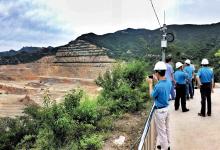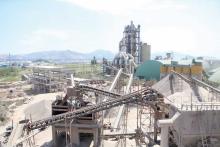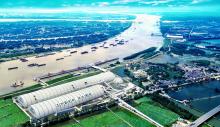Tom Pellette, group president for construction industry equipment, made the remarks as the Chinese economy recorded its slowest growth rate since 2009 in the third quarter, due to declining construction and factory activity, which many economists do not believe has bottomed out yet.
The forecasts also highlight Beijing’s efforts to rebalance the economy away from its traditional drivers such as manufacturing and investment and towards consumer spending. It also demonstrates the impact of the stimulus programme, which the government unleashed during the global financial crisis, had on demand.
Pellette said industry-wide sales of hydraulic excavators between 10-90 tonnes, will reach the “23,000 range” in China this year. That compares with a total of more than 27,000 sold in March alone in 2011 and more than 112,000 for the whole of 2010, which was the peak year for the market. The company does not disclose figures for sales of its own products by country.
“That shows how far off the peak we are,” Pellette told the Financial Times in an interview. “My expectation is within China and globally that the market will pick up to a level above where we are in 2015. But for China specifically, our expectation is that the market will rebound but we are not planning [for it to] get back to 2011/2012 levels.”
Despite the immediate headwinds, Pellette is optimistic about the long-term future for the company’s business in the world’s second-largest economy in part because the urbanisation of the country has some way to go. Caterpillar also cited the government’s plan to double both the gross domestic product and income base between 2010 and 2020.
“There is still fantastic growth and that will drive a strong need for our products’ services, but just not at the level seen in 2011 and 2012,” Pellette said, adding that some of that demand will also come as China becomes “more and more involved in the global economy” with investments in places such as Africa and Latin America.
The US-based group with its distinctive bright yellow machines is often dubbed a global bellwether, with its sales giving investors insights into the state of economies from China to Brazil. Last month’s decision to lay off more than 10,000 people and further slash costs highlighted uncertainty around the world. The company has not disclosed the extent to which its cost reduction and job cutting programme will affect its Chinese operations.
Tumbling oil prices — in part due to declining Chinese demand as well as high levels of production — has forced energy majors to slash capital investment. Caterpillar’s moves to expand its existing cost-cutting programme last month suggested that a revival in global demand was going to take some time.
In the shorter term in China, Pellette said: “We haven’t seen a big turn in terms of improvement on the ground yet; it’s still a struggling market place with some signs of hope with the optimistic among us.”
One glimmer on the more immediate horizon is China’s introduction next year of European-style emission standards for non-road engines, such as Caterpillar’s excavators, said Qihua Chen, Caterpillar’s country manager for China. The group said it is the first engine manufacturer to receive Chinese certification from the environment ministry for larger engines.
Chen said that he was “absolutely” already seeing demand for these types of non-road vehicles, but as owners of existing vehicles are not required to replace their machines, demand is not expected to surge.









